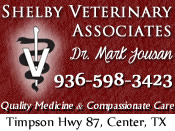May 8, 2019 - This Mother’s Day, give your mom a gift that could save her life. Remind her to have her annual screening mammogram.
Breast cancer is the second leading cause of cancer death among women, exceeded only by lung cancer. Statistics indicate that one in eight women will develop breast cancer sometime in her lifetime. Breast cancer can strike anyone – young or old, male or female, from all ethnic backgrounds and walks of life. Former first lady Betty Ford, “Good Morning America” anchor Robin Roberts, singer Olivia Newton-John and actor Richard Roundtree are all breast cancer survivors.[1] Their breast cancer experiences began when the disease was diagnosed because a symptom or screening test suggested breast cancer.
The most common sign of breast cancer is a lump or mass. Other common symptoms include breast swelling, skin irritation, the nipple turning inward, nipple discharge (not breast milk) and breast or nipple pain.[2]
Three tests used to diagnose breast conditions are diagnostic mammogram, ultrasound and magnetic resonance imaging (MRI). A diagnostic mammogram, which generates X-ray pictures, focuses on a specific area of the breast and takes more detailed pictures of the areas that look abnormal. An ultrasound, which uses sound waves, can help doctors determine if an abnormality is a benign fluid-filled cyst or a potentially cancerous solid mass. MRI, which uses radio waves and strong magnets, is sometimes used to look for tumors that did not appear on a mammogram.
NMC Health Network is the only provider in Nacogdoches that offers 3D mammography (breast tomosynthesis) for breast cancer screening. Breast cancer screening with tomosynthesis when combined with a conventional 2D mammography has a 40 percent higher invasive cancer detection rate than conventional 2D mammography alone. The hospital’s 3D imaging system offers exceptionally sharp breast images, and an advanced ergonomic design providing more patient comfort. It produces a three-dimensional view of the breast tissue that helps radiologists identify and characterize individual breast structures without the confusion of overlapping tissue.
3D Mammography has the potential to benefit all screening and diagnostic mammography patients and is especially valuable for women receiving a baseline screening, those who have dense breast tissue and/or women with a personal history of breast cancer.
“The stage at which breast cancer is detected influences a woman’s chance of survival,” said Dr. Charles Thompson, Chief Medical Officer at NMC Health Network. “By offering this advanced technology in mammography, we hope to increase the number of women in the area who will come for routine screenings.”
If detected early, the five-year survival rate is 98 percent. About 80 percent of breast cancers occur in women with no family history or known risk factors. Cancers in younger women tend to be more aggressive, so early detection is critical.
Screening should start at age 40, but those with a family history may need to be screened sooner. For women who are at high risk or have been found to be positive for BRCA1 or BRCA2 gene mutation, screening should begin between the ages of 25 and 30.
NMC is committed to the fight against breast cancer. If you would like to schedule a mammogram, or have questions about this important breast health procedure, please call (833) 222-7439.









